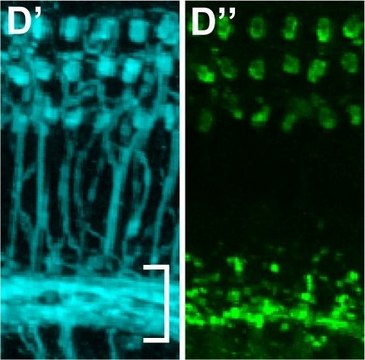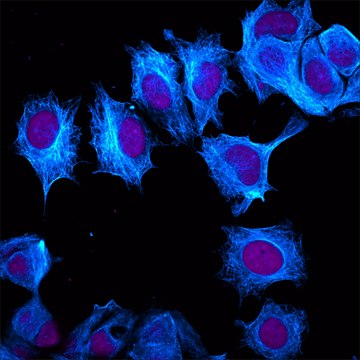SAB3700546
Anti-Rat IgG (Fc specific) antibody produced in rabbit
affinity isolated antibody, buffered aqueous solution
Sign Into View Organizational & Contract Pricing
Select a Size
All Photos(1)
Select a Size
Change View
About This Item
UNSPSC Code:
12352203
NACRES:
NA.46
Recommended Products
biological source
rabbit
Quality Level
conjugate
unconjugated
antibody form
affinity isolated antibody
antibody product type
secondary antibodies
clone
polyclonal
form
buffered aqueous solution
species reactivity
rat
concentration
2.0 mg/mL
technique(s)
immunohistochemistry: suitable
indirect ELISA: suitable
western blot: suitable
Related Categories
General description
IgG contributes to 10−20% of plasma protein and is regarded as one of the most predominant serum protein. It consists of four subclasses: IgG1, IgG2, IgG3 and IgG4. The IgG structure possesses four polypeptide chains containing two identical γ heavy (H) chains and two identical κ or λ light (L) chains of 50kDa and 25kDa respectively. Papain and pepsin digestion yields two main fragments of the antibody: Fab (antigen binding fragment) and Fc (fragment crystallization tail).
Specificity
This product was prepared from monospecific antiserum by immunoaffinity chromatography using Rat IgG coupled to agarose beads followed by solid phase adsorption(s) to remove any unwanted reactivities. Assay by immunoelectrophoresis resulted in a single precipitin arc against Anti-Rabbit Serum, Rat IgG, Rat IgG F(c) and Rat Serum. No reaction was observed against Rat IgG F(ab′)2.
Immunogen
Rat IgG F(c) fragment
Biochem/physiol Actions
IgG (immunoglobulin G) antibody provides protection against bacterial, fungal and viral infections. Maternal IgG is transferred to fetus through the placenta that is vital for the immune defense of the neonate against infections. The Fc (fragment crystallization tail) region of the antibody is implicated in complement activation in which it elicits an immune response by binding to the Fc receptor on macrophages.
Physical properties
Antibody format: IgG
Physical form
Supplied in 0.02 M Potassium Phosphate, 0.15 M Sodium Chloride, pH 7.2
Disclaimer
Unless otherwise stated in our catalog or other company documentation accompanying the product(s), our products are intended for research use only and are not to be used for any other purpose, which includes but is not limited to, unauthorized commercial uses, in vitro diagnostic uses, ex vivo or in vivo therapeutic uses or any type of consumption or application to humans or animals.
Not finding the right product?
Try our Product Selector Tool.
Storage Class
10 - Combustible liquids
flash_point_f
Not applicable
flash_point_c
Not applicable
Choose from one of the most recent versions:
Certificates of Analysis (COA)
Lot/Batch Number
Don't see the Right Version?
If you require a particular version, you can look up a specific certificate by the Lot or Batch number.
Already Own This Product?
Find documentation for the products that you have recently purchased in the Document Library.
Our team of scientists has experience in all areas of research including Life Science, Material Science, Chemical Synthesis, Chromatography, Analytical and many others.
Contact Technical Service








